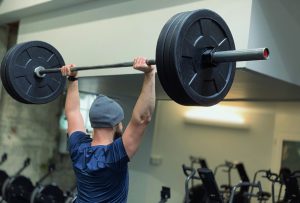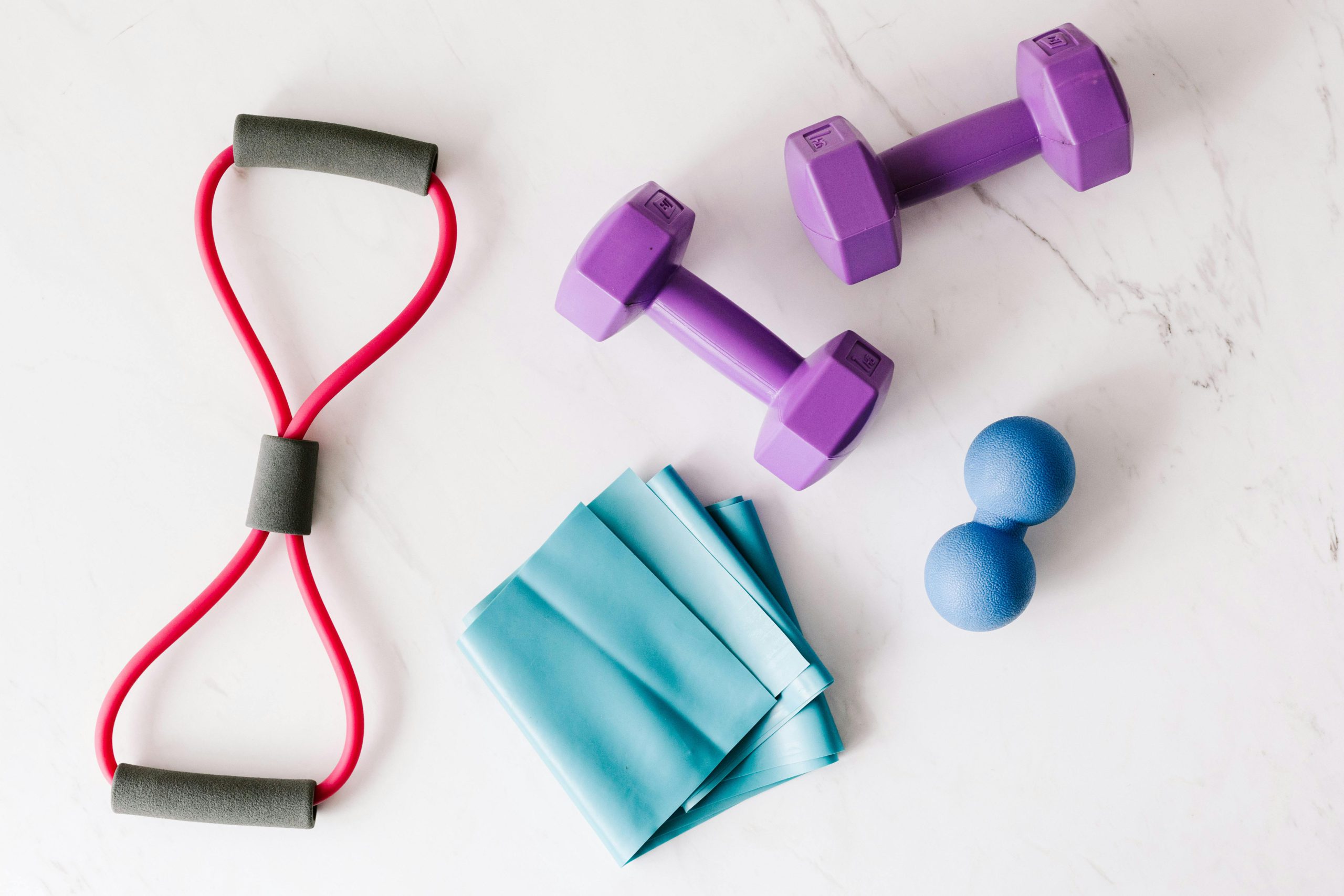As kinesiotherapists, we need to know which training equipment to use in rehabilitation. These may include dumbbells, medicine balls, cables, kettlebells, resistance bands, balance boards, sticks, trainers, weights, and many others. It is essential to recognize the value of each and use them correctly.
Free weights, resistance bands, or cables?
Description
The primary determinants in setting a rehabilitation protocol are the type of injury and the patient’s current condition. The chronicity and nature of the injury immediately indicate which equipment we will use more, less, or perhaps not at all. Additionally, the patient’s motor skills and previous exercise experience may limit us in some advanced tasks. For the purpose of this lesson, we will focus on the four main categories of training equipment mentioned in the title.
Physical Properties
Describing the basic physical principles of each piece of equipment reveals that each is distinctly different. Free weights have a clearly defined and constant mass. To engage muscles, we overcome this mass with our body or part of our body against gravity. Using cables, we again overcome a steady resistance, but instead of using our body against gravity, we rely on a pulley and weight system. Resistance bands, on the other hand, have progressively increasing resistance as they stretch, so the force is progressively greater. With bands, we overcome elastic resistance instead of gravitational force. These physical properties result in different muscle activation, which is why we must use each appropriately. Every movement involves concentric and eccentric muscle activation, which must be considered when thinking about each piece of equipment’s function and how force is distributed across the body and muscles during exercise.
Application
Can using cables improve balance? Can you activate the middle trapezius muscles with dumbbells in a fully upright position? Can resistance bands, no matter how strong, develop maximum strength for lifting weights or javelin throwing? If you answered “yes” to any question, will using those exact tools yield the best possible result? I believe we are now arriving at “no” and the importance of understanding and correctly applying each piece of training equipment.

Resistance Bands
Resistance bands are our favorite tool for rehabilitation of the general population or recreational users. They are straightforward to use, offer a variety of upper-body exercises, are gentle on the joints, and, when used correctly, engage all stabilizing muscles of the arms, neck, back, and shoulder girdle. Our patients also note:
-“I don’t have to go to the gym; I can work out at home.”
-“I take the band with me and stay active on business trips.”
-“They are very affordable.”
When rehabilitating a strong athlete after a shoulder injury or neck pain, we often notice that, despite high maximum strength with weights and dumbbells, their endurance in exercises with resistance bands is almost below average. This is because the linear nature of resistance with bands means that “larger” muscles cannot participate as much; most of the load focuses on stabilizing the joint and activating “smaller” muscles. The advantage of resistance bands is that they allow for easy activation from simple body positions, promoting muscle endurance, which is the most important health component for the average person. Additionally, due to the linear resistance, the greatest resistance often occurs when we are also “strongest,” or when the lever is closest to the joint (center). This promotes strong eccentric and concentric activation!
To answer the previous question, resistance bands (along with cables) are the best way to activate the middle trapezius muscles (Rhomboideus minor and major) in a fully upright position.
The downside to using resistance bands is the lack of gravitational component, limited exercise choices for activating lower body muscles, and generally insufficient resistance for developing maximum strength or significant hypertrophy. Additionally, even though manufacturers calculate the resistance of each band, due to the nature of stretching and wear of elastic material, we cannot be sure of the exact volume and intensity of the load. Progression in exercises with bands often relies on the patient’s or our perception.
Cables
Using cables in the rehabilitation process offers similar effects to resistance bands. The main difference is that cables lose the progressive loading effect while still not having direct gravitational impact on the body and joints. Today, cables and weight plates find use in an increasingly diverse array of training equipment. To simplify thinking and discussion, imagine a standard cable with a pulley that can move up and down. All subsequent points can apply to any equipment using cables and plates.
With cables, intensity progression is clear and measurable. If we previously performed a specific exercise with 10 kilograms for a set number of repetitions and now add two more kilograms, we know we’ve progressed by 20%. Compared to free weights (especially bars), cables offer more options for hand and forearm or hip angles, allowing for individual adjustment in each exercise. This meets one of the most important principles—ensuring the exercises are painless.
A drawback of cables, again, is the minimal gravitational impact on the body. Also, one of the major disadvantages is the cost of such equipment for home workouts and the wide variety of machines in a typical fitness center. This requires knowledge of using these tools to prevent injury and maximize effect.

Free Weights
Free weights are generally divided into two categories: barbells and dumbbells. As the names suggest, dumbbells are single-handed weights, while barbells are bars with added weight plates. The first and most important difference between these two is the freedom of movement. Our recommendation for rehabilitation is to use dumbbells as much as possible. This approach allows the use of the entire kinetic chain in a broader range, meaning we can adjust movement based on anatomical differences between the left and right sides of the body. Imagine a patient with right shoulder pain due to impingement, where we want to activate the scapular muscles through rowing. Using a barbell “shortens” the kinetic chain, forcing the right shoulder to adapt to the non-problematic (left) side, which can cause pain or reduce activation quality. Dumbbells also offer more freedom of movement in the wrist, forearm, and shoulder joints, allowing for adjustment of the movement itself. Regardless of the type of free weight, they indisputably add a gravitational effect on the body and joints. In free-weight exercises, in addition to gravity, we overcome additional force. In the squat exercise example, the patient no longer handles their own 70 kilograms, but with added dumbbells, they now handle, for example, 80 kilograms. Many studies have found that bone-loading improves bone density, stimulates osteogenesis, and thus reduces the likelihood of osteoporosis and sarcopenia in old age.
Conclusion:
A quality selection of training equipment for rehabilitation exercises is of great importance. A skilled therapist is familiar with as many pieces of equipment as possible and understands their application, advantages, and disadvantages. After choosing exercises that will address the patient’s issues, it is important to carefully plan which equipment to use and assess the motor skills needed for correct performance. Explore our Academy for more information.

